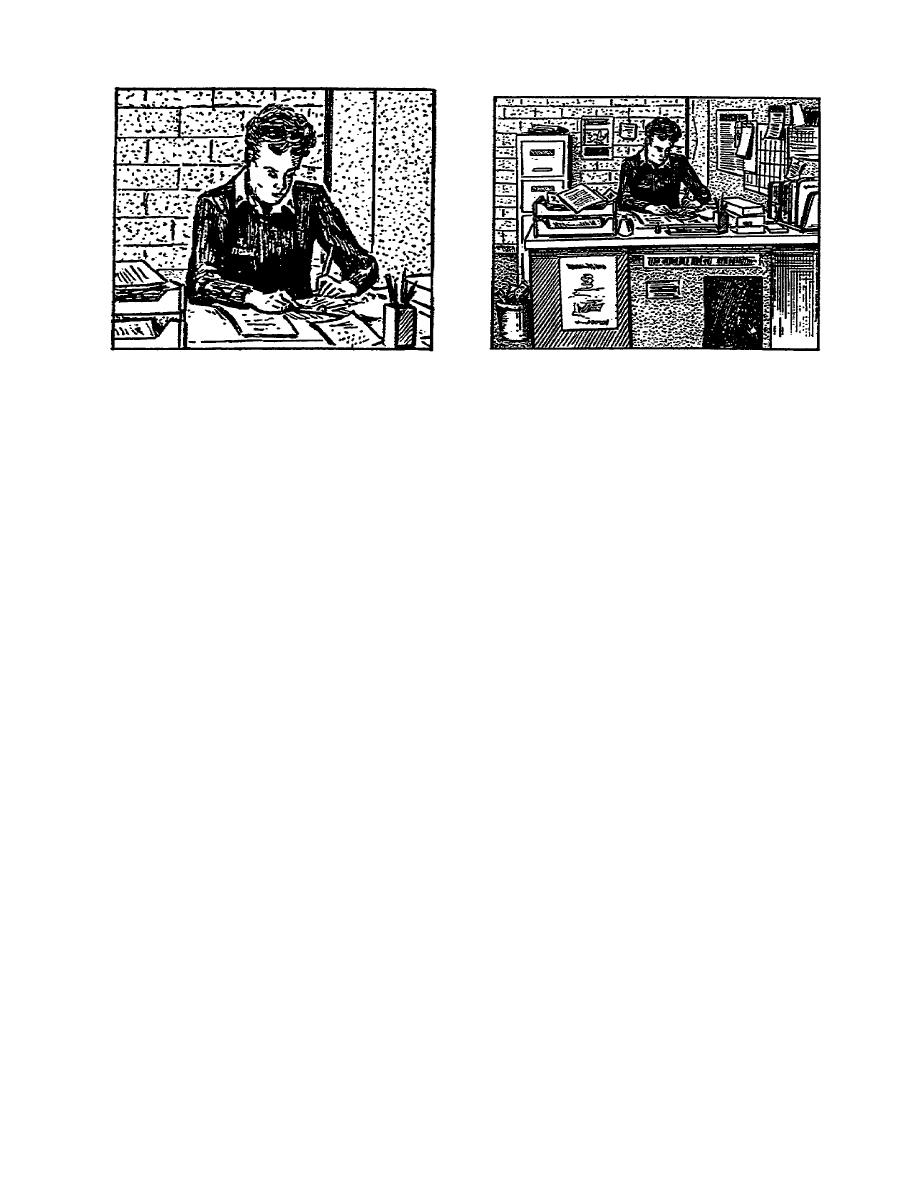
Figure 3-1A.
Simple composition
Figure 3-1B.
Cluttered composition
Figure 3-1.
Simple composition is usually best
(3) But what if the message you wish to send is more complicated than
that? What do you do then? Most likely, you would take several pictures,
each telling a small part of the story until you have enough images (all
well composed) to tell the complete story. This isn't much different from
writing.
It's possible to tell the whole history of the world in one
sentence, but it is either going to be a very long and complicated sentence,
or a lot is going to be left out. That's why paragraphs and chapters were
invented. It' much the same with photos.
b. Point of Interest: This is related to simplicity. It means that a
photograph should have an obvious subject, something that draws the viewers
attention.
In the above example, the switchboard would be the point of
interest. Note that the term is "point", not "points".
(1) Usually, the center of interest should not be dead center because
this tends to have a hypnotic effect on the viewer.
The eyes go to the
center almost immediately and stay there. The rest of the picture is lost.
(2) The effect of the picture might also be lost if the center of
interest is too near the edge of the picture.
(3) Most good photos restrict themselves to a single main point of
interest, with all other elements of the picture made secondary in
importance. This isn't always true, and you should keep your eye and mind
open to the possibilities of using two or more equal points of interest when
the situation calls for it.
Just keep in mind that such situations are
relatively rare.
54


 Previous Page
Previous Page
